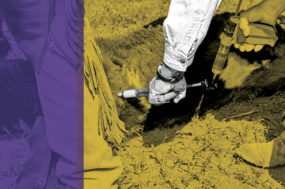If drought conditions continue to improve, many producers will be considering retaining or purchasing more replacement heifers over the next year. Heifer selection is important because of the long-term impacts it can have on an operation. The heifers that will be best or most profitable for the operation may vary depending on the goals of the operation. Is the goal to sell calves after weaning, retain ownership through the feedyard, sell commercial females to other producers, sell registered seedstock or something else?
Traits that reduce the likelihood a female will experience reduced production, increased management costs or be culled before the age of 12 years should be important to all cattle producers. Poor foot quality is a significant problem across the cattle industry. It leads to lameness, reduced performance and early culling of many females. When selecting potential replacement heifers, evaluate both hoof shape and foot angle. Some breed associations have reference materials to help when evaluating foot quality. Pay close attention to hooves that tend to curl, as this condition accounts for a large portion of the lameness problems related to poor foot quality. Keep in mind, poor foot quality only gets worse with age.
Temperament is another important trait when selecting replacement heifers. Docile heifers are more enjoyable to be around, and they are less likely to injure themselves, a person or damage facilities. Additionally, shrink will likely be less for docile calves on sale day, and temperament is a highly heritable trait.
Fertility is almost always the most important factor when considering lifetime profit potential of females, especially those in commercial production. Unfortunately, fertility can’t be evaluated by looking at heifers. One strategy to help select more fertile heifers is to expose more heifers to the bulls than are needed. Then select replacements from those that get bred in the first 30 days. This helps select more fertile heifers and maintain a tight calving window. It also increases the breedback percentages as these early-bred heifers have a longer window to get bred after their first calf. It also aids in selecting heifers that best fit the production environment. Extra bred heifers can be sold as replacements or marketed as feeder heifers.
Additional traits to consider when selecting heifers include environmental adaptability, structural soundness, fleshing ability, mature size, udder and teat construction, genetic potential for growth or carcass traits, cost and others.








